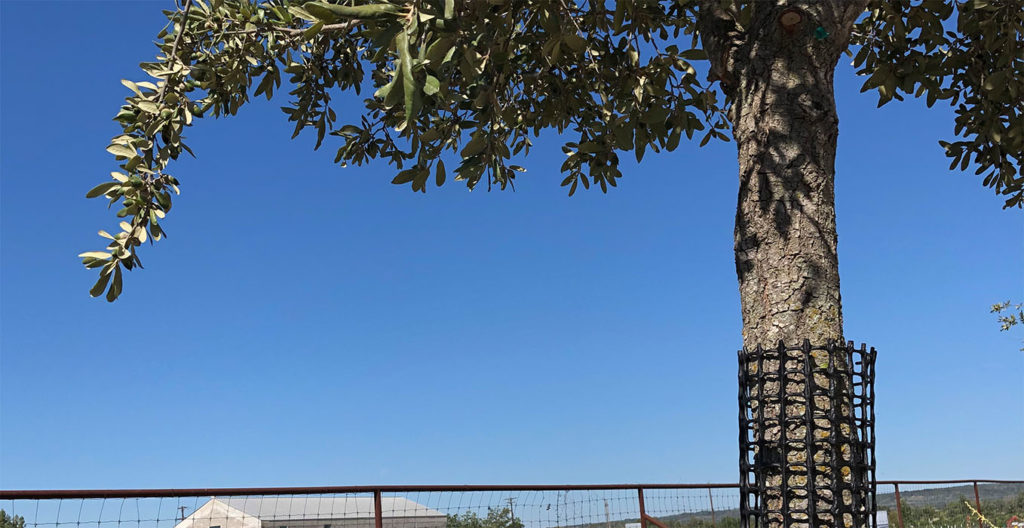We are at the time of year again when the deer are in “the rut”. “The rut” refers to the breeding season, from about September to February in Central Texas. Anyone with newly planted or young trees in deer territory should be aware of this season and take measures to protect these trees from irreparable damage.
Bucks will be rubbing their antlers on primarily young trees with thin bark, marking their “territory” and showing their dominance to intimidate other bucks. They begin this marking behavior in the fall, and then rubbing intensifies in late winter to help the bucks shed their antlers.
When bucks rub their antlers against a young tree, they scrape the thin bark away along with some of the vascular tissue called phloem. Phloem carries carbohydrates and sugars manufactured in the leaves to the roots or other parts of the tree. If the tree is heavily scraped, the second layer of tissue, called the cambium, will be damaged, causing destruction of the area of cell division. The next layer down is the xylem, which moves water and nutrients. These tissues, once destroyed, cannot be repaired by the tree. If the phloem is severed all the way around the tree, carbohydrates cannot be carried to the roots, and the tree will die. The most destructive time for injury to occur on the tree in at the start of growth in the spring, as the bark will slip and cause more damage to the phloem.
If the injury is only on one side of the tree, the tree will probably live, but may show signs of dieback in the canopy on that side, and will be weakened, predisposing the tree to insect and disease.
Preventing the damage from rutting bucks is obviously the best way to address this potentially deadly issue, and it is relatively simple to do. Any time you plant a new tree, simply put a 4’ tall piece of wire fencing around the trunk, so that it is about 4”-6” from the trunk itself. A strong plastic “mesh” tree guard, manufactured by A.M. Leonard, is also available at Backbone Valley Nursery, easily installed with small zip ties. Avoid the temptation to put black corrugated plastic drainpipe around the trunks, as the bark needs access to air for gas exchange, and to avoid problems with insects and disease.
